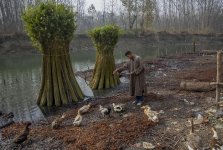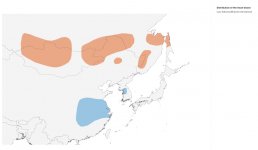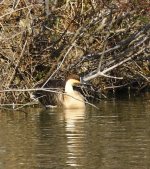I came across this photo (attached) in the UK Guardian newspaper online today. The caption is "Srinagar, Indian-controlled Kashmir.
A villager feeds rice to domestic fowl on the outskirts of Srinagar, Photograph: Dar Yasin/AP"
At the bottom right of the picture, there seems to be a Swan Goose which as far as I can see is not some domesticated variant.
I was lucky enough to see one of these birds as a vagrant in Japan last year, about 100km from my house.
But I think Kashmir is a long way outside its natural range.
So: is it a food species in places such as Kashmir? And, if so, surely escapees should have linked over the years to its regular habitat more to the east?
Or have I just got the species wrong?
I'd be interested (just for interest's sake) to hear any comments.
A villager feeds rice to domestic fowl on the outskirts of Srinagar, Photograph: Dar Yasin/AP"
At the bottom right of the picture, there seems to be a Swan Goose which as far as I can see is not some domesticated variant.
I was lucky enough to see one of these birds as a vagrant in Japan last year, about 100km from my house.
But I think Kashmir is a long way outside its natural range.
So: is it a food species in places such as Kashmir? And, if so, surely escapees should have linked over the years to its regular habitat more to the east?
Or have I just got the species wrong?
I'd be interested (just for interest's sake) to hear any comments.
Attachments
Last edited:







